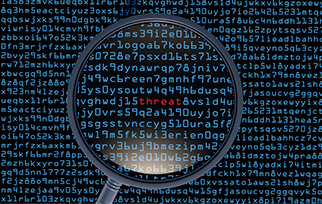Organizations in any field get scared just thinking about losing data. Protecting your firm against potential losses is crucial to fortifying its strength. Data loss in the modern day can occur due to various factors, including accidental deletions and malicious intrusions by hackers.
The repercussions of data loss extend far beyond monetary concerns. It may also lead you to disobey the law and damage your reputation. This article will discuss data loss prevention and various other aspects in detail.
Understanding the Impact of Data Breaches on Organization
Costs and Benefits
The total cost to a company of a data breach and the damage it can cause might compound annually. Additionally, the analysis revealed that the average Cost of each stolen or lost record increased by 4.8% in the past year, reaching GBP 100 for every record that contained sensitive information.
Data breaches that reveal sensitive client information may be extremely expensive for any organization, regardless of the size of its customer database. As a result, recognizing and eliminating cybersecurity risks is of the utmost importance.
Decreased Output
A significant drop in output may result from data breaches. Minimizing cybersecurity risk helps combat some of the most common cyberattacks. Experts can save a system from a Denial of Service or other attack.Reputation
Data breaches put all your data in danger, damaging your connections with partners and other business partners. A decline in income and a loss of customers may result from investigations, leaks to the press, or even word of mouth.Protect your good name, which is more valuable than any asset your company owns. If you care about your reputation, you should take the finest cybersecurity precautions to protect your network.
Cybalt’s services offer a one-of-a-kind, 360-degree solution that is both simple and automated, with the help of strong AI. Data experts make objective, measurable reports on an organization's cybersecurity risk and performance to help businesses adapt to today's open, shared, digital world and do business safely.
The Role of Data Loss Prevention in Cybersecurity
Data on product efficacy, consumer tastes, and marketing efforts can make your firm rich. Therefore, protecting it is a worthy investment and essential to success.
Data loss prevention is crucial to every cybersecurity plan, big or small. Networks with comprehensive data loss prevention protect confidential data. Understanding DLP's purpose, usefulness, and operation is the first step to understanding its digital significance.
Endpoint DLP Solutions: Protecting Data on Devices
It would help if you had an endpoint DLP solution to keep critical information safe even when users and employees aren't online. With Endpoint Protector, you can safeguard data in real-time across Windows, macOS, and Linux devices—even when they're not online—since it's the only DLP solution that supports multiple operating systems.
Cybalt’s data loss prevention (DLP) solution which has been the market leader for over a decade provides security teams with the information they need to mitigate security threats and devise a DLP strategy to stop the illegal transfer or malicious exfiltration of any data via any number of channels, including but not limited to email, network/browser uploads, enterprise messaging apps, and USB storage devices.
Network DLP Solutions: Securing Data in Transit
Cloud data loss prevention solutions safeguard valuable data assets by integrating several technologies and industry best practices. Tools that help IT workers discover sensitive material are usually part of cloud network DLP solutions. Data loss prevention solutions in the cloud can aid IT departments in finding and visualizing sensitive data and understanding its physical location. Obtaining a comprehensive view of all data that needs protection requires scanning both cloud infrastructure and on-premises systems.
Sort information and establish regulations. The IT department sorts sensitive information by business value, likelihood of loss or leak, and potential impact in the event of a data loss incident to allocate resources to the areas with the greatest risk.
Security teams might establish rules about the classification of data, its handling, its transmission, storage, and data loss protection afterward. Security teams implement measures such as multifactor authentication and access control management to restrict access to authorized personnel only.
Stay vigilant and watch for any signs of possible loss or leaks. Continuous monitoring of cloud environments and data moving to and from the cloud is a key component of cloud data loss prevention solutions.
This makes finding data that needs to be encrypted or redacted is easier. There is protection against strange behavior or illegal use, and data saved in the cloud is not lost or changed.
Cloud DLP Solutions: Safeguarding Data in Cloud Environments
Traditional data loss prevention solutions are different because they're usually set up on-site and focus on keeping an organization's endpoints and internal network hardware safe. When workers switched to a hybrid WFH model, one of the main reasons they used cloud best DLP solutions sped up.
Data usage went from standard on-premises setups to the cloud in what seemed like an instant. Not surprisingly, the quick change made the risk of data breaches higher. This is especially true since a lot of people use cloud-based work platforms, which let hackers get to new types of data.
Encryption: Protecting Data at Rest and in Transit
Decryption and data restoration are only possible with the matching decryption key. So, even if someone acquires encrypted content, they can only decipher it with the key.Advantages of Encrypting Data
Maintaining Privacy
Encryption keeps sensitive data safe from prying eyes by limiting access to only those with the decryption key.Consistent Data
Rules for Adherence
Data Transmission Security
Anti-Insider Threat Measures
Best Practices for Implementing Data Loss Prevention Strategies
Many different types of businesses frequently use these methods. These concerns are paramount if a company or group handles private information like customer bank records or medical histories.
Additional data retention laws may apply to the organization if this is true. Such sensitive information poses serious financial and legal risks to the business in the event of its loss or exposure. A thorough Data Loss Prevention strategy for IT structures is the only surefire way to avoid this.
Challenges and Considerations in Data Loss Prevention
Challenges of DLP
DLP Considerations
Data exfiltration methods are ever-present. Whether using a concealed camera, a camera phone, or just memorizing it and writing it down later, there's always a method to capture the moment.
Implement a hierarchical data separation strategy that divides information into systems, applications, and transportation. Use narrowly tailored policies and more general ones to get a range of notifications.
Choose the ones that perform better and hold on to them. Keep steam in your efforts to categorize and tag data. Expert members can be held liable for any actions that people or businesses take based on this information.
Best DLP Solution By Cybalt
If a data loss incident occurs, data loss prevention should restore normalcy immediately and minimize harm. These recommended practices protect sensitive data and reduce legal and reputational risks for organizations. If you need help in securing your data, contact Cybalt.
Other Blogs

From Nuclear Centrifuges To Machine Shops: Securing IoT
IoT or ‘the internet of things’ has been around for a lot longer than the buzzword
Read More


Demystifying XDR
As the capabilities of threat actors have increased so have the tools which we utilize to detect and respond to their activities.
Read More


Cybersecurity In A Post Pandemic World
As many cyber security practitioners will tell you, the most imminent and dangerous threat to any network are the employees accessing it.
Read More


